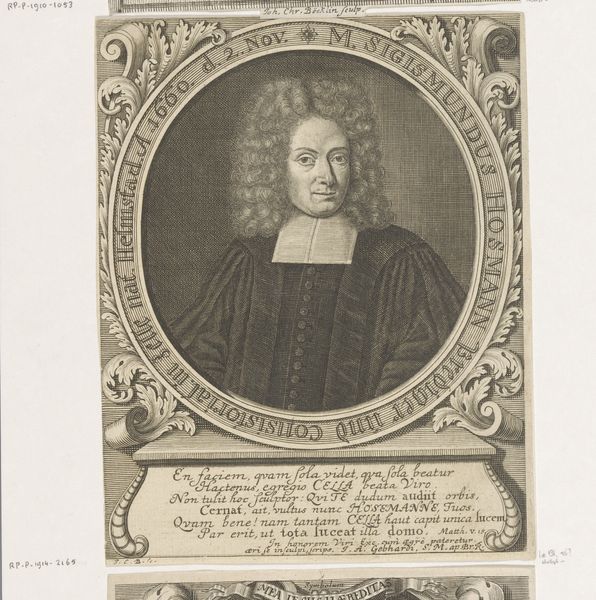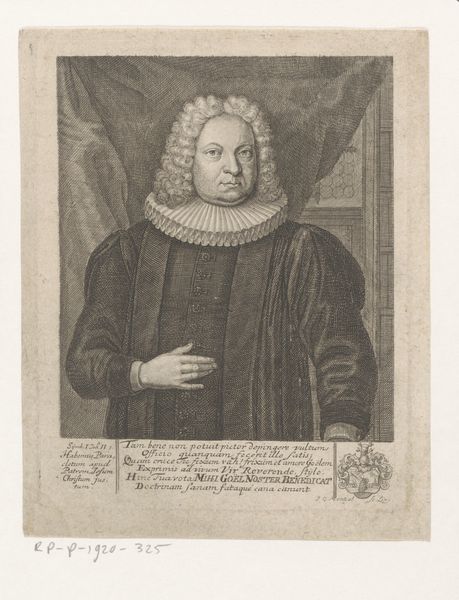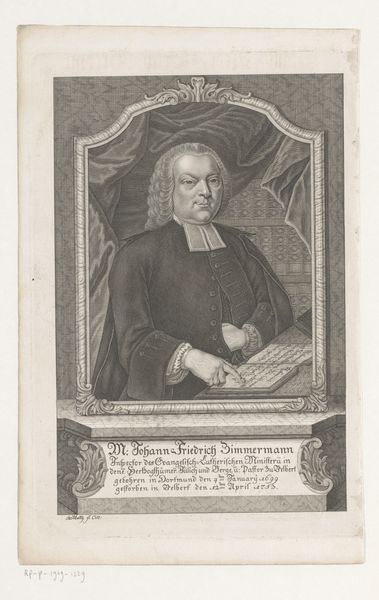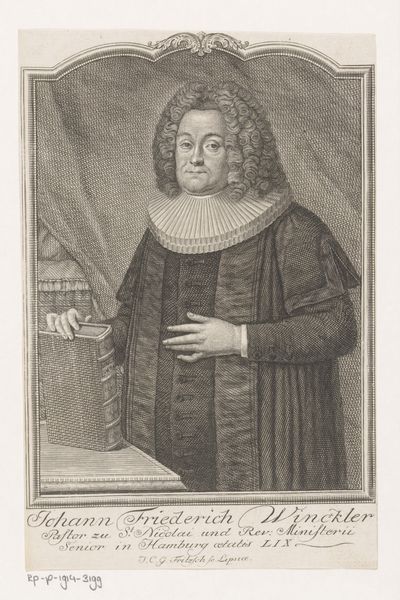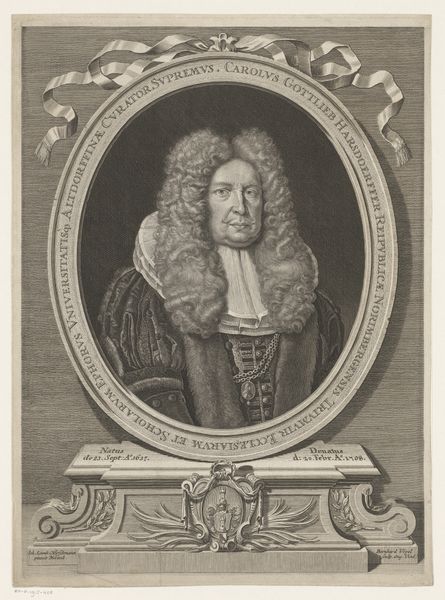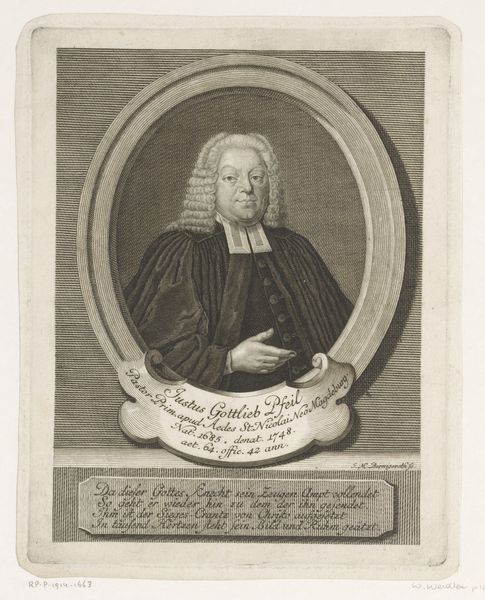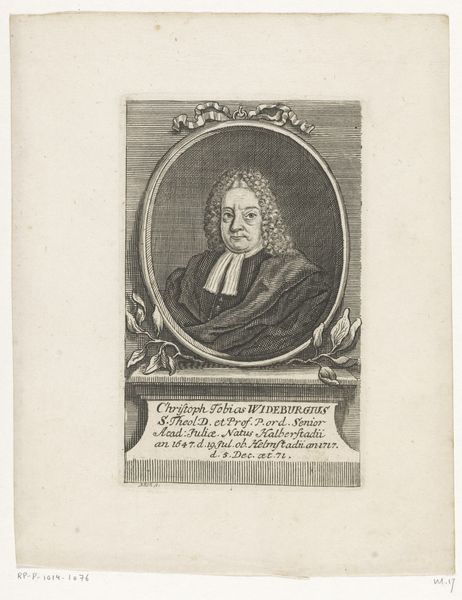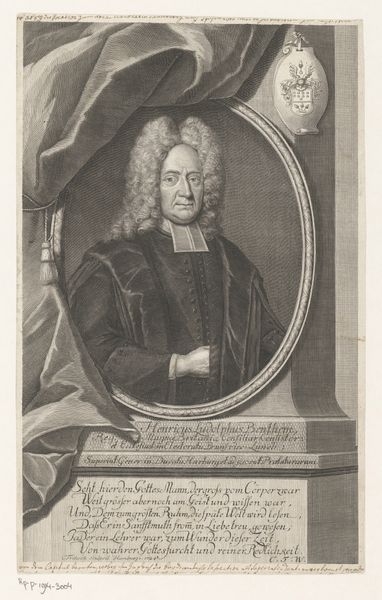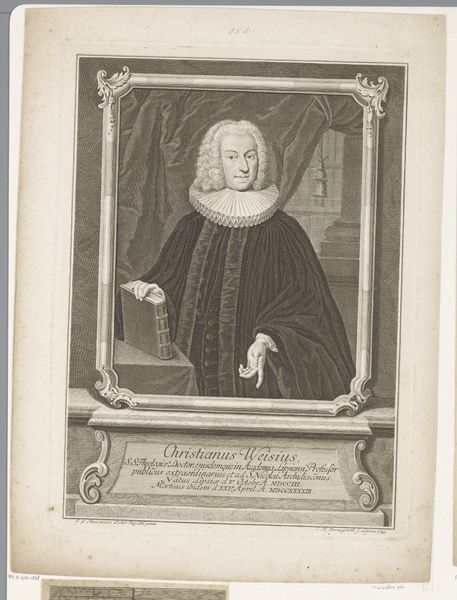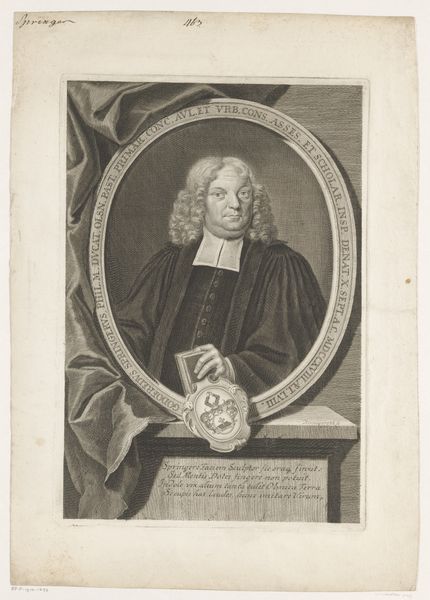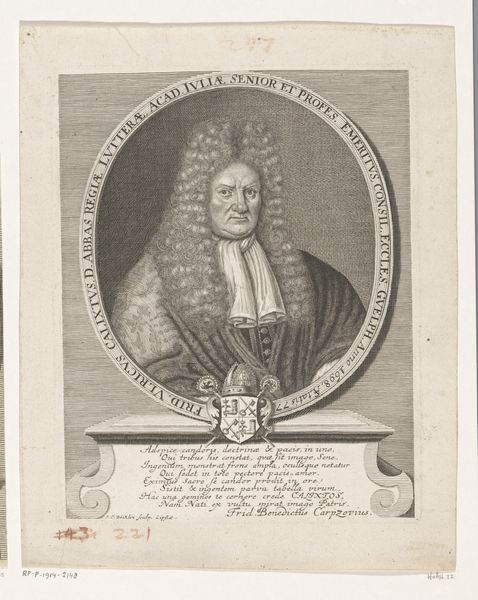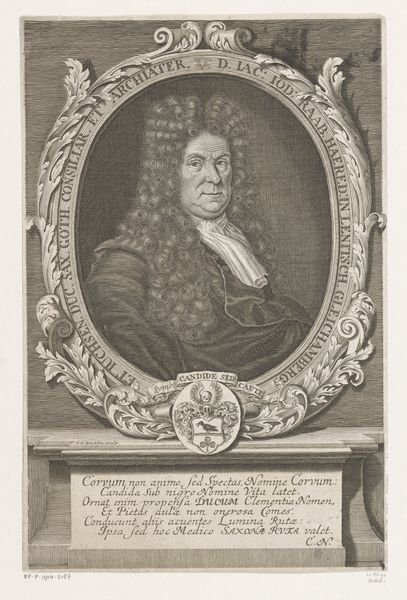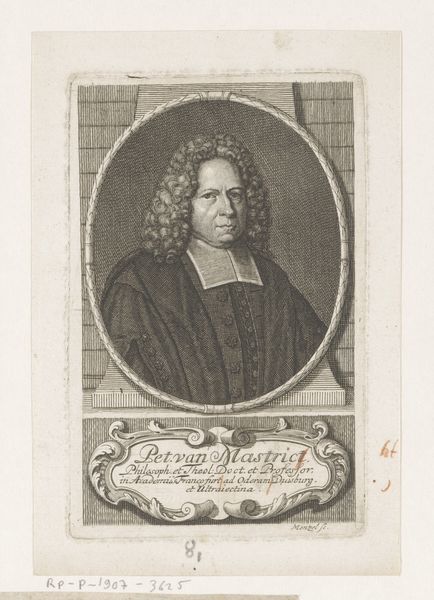
print, paper, engraving
#
portrait
#
baroque
# print
#
book
#
paper
#
history-painting
#
engraving
Dimensions: height 390 mm, width 270 mm
Copyright: Rijks Museum: Open Domain
Curator: This is a striking baroque print, created in 1753. The title is "Portret van Johann Wilhelm Lörper," and the artist is Johann Ernst Gericke. Editor: It's so formal, isn't it? The composition feels very deliberate and the stark monochrome really emphasizes the subject’s rather…stolid presence. Curator: Let's delve into the process. As an engraving, the lines and details would have been meticulously carved into a metal plate. Think about the labor involved. The tools, the precision... This would have been a costly process for a medium aimed for wide distribution of images. Editor: Agreed. I am immediately struck by the artist’s impressive control over the medium to create depth through the delicate textures and shadows. Note the intricacy of the curls in his wig or the subtle way light reflects on the book he’s holding. Curator: Precisely, Johann Wilhelm Lörper was clearly a man of importance—superintendent, professor, theologian. This print served as a marker of social status and a symbol of intellect. And let's not overlook the choice of paper. Its texture and quality speak to the print's value as an object. Editor: The formal architecture of the frame further isolates him while simultaneously creating an impressive and somewhat foreboding sense of space and structure that contains Lörper's bulk. I find the frame equally as compelling as the face it encloses. Curator: Beyond that, the printing of multiple copies would allow this image, this visual representation of power, to be disseminated to a wider network. Its materiality gives it a social and political agency. Editor: It prompts a broader question regarding portraiture of that time: does capturing the external appearances give any true insight into the internal life and emotional makeup of this man? I’m not sure this does, really, for all its Baroque complexity. Curator: Ultimately, this print offers us a glimpse into the networks of power, production, and dissemination in the 18th century. The social context shapes our understanding of it, deeply influencing the work as a result. Editor: I am left reflecting on how the artist skillfully combined formal visual components and symbolic messaging to give his subject status in that period of history. I appreciate seeing Lörper as an aesthetic composition that I might never have imagined I’d respond to so deeply.
Comments
No comments
Be the first to comment and join the conversation on the ultimate creative platform.
